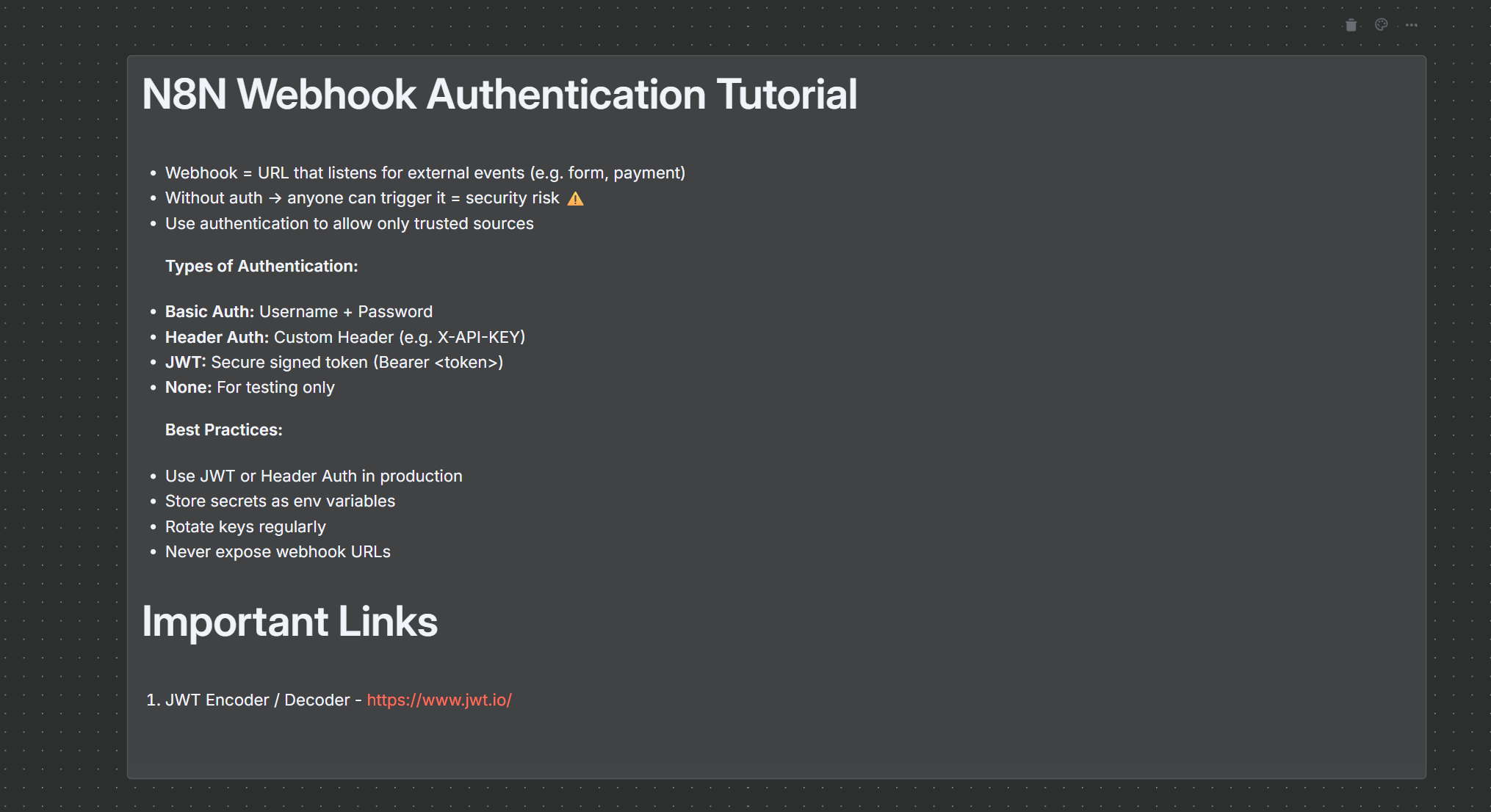Lesson 115 min
N8N Webhook Authentication Tutorial
Learn how to secure your n8n webhooks using different authentication methods like Basic Auth, Header Auth, and JWT to prevent unauthorized access.
N8N Webhook Authentication Tutorial
In this tutorial, you'll learn about the importance of securing your webhooks in n8n and the different authentication methods you can use.

Why is Webhook Authentication Important?
- Webhook: A URL that listens for external events (e.g., a form submission or a payment).
- Without authentication, anyone can trigger your webhook, which is a significant security risk.
- Authentication ensures that only trusted sources can send data to your workflow.
Types of Authentication
n8n supports several types of authentication for webhooks:
- Basic Auth: Requires a username and password.
- Header Auth: Uses a custom header with a secret key (e.g.,
X-API-KEY). - JWT (JSON Web Token): Uses a secure, signed token (e.g.,
Bearer <token>). - None: No authentication. Should only be used for testing purposes.
Best Practices
- Use JWT or Header Auth in a production environment.
- Store your secrets (passwords, API keys, tokens) as environment variables.
- Rotate your keys and secrets regularly.
- Never expose your webhook URLs publicly.
Important Links
- JWT Encoder / Decoder - https://www.jwt.io/